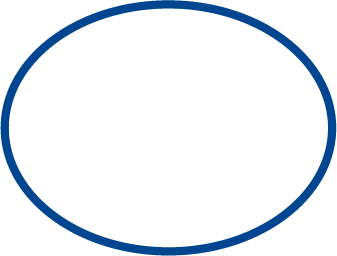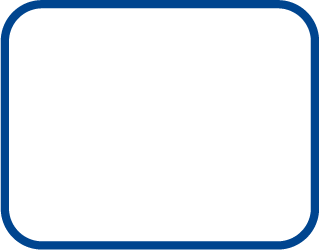Workflow Creation

Workflows, sometimes referred to as a flowchart, can be documented many ways, with varying degrees of detail and allowances for variation. What is most important is to document the workflow in a way that is easily understood and shared. It may be necessary to simplify a workflow, or show examples relevant to everyday life (e.g., withdrawing cash from an ATM) when introducing workflows to CHWs and supervisors that have not used them before. The workflow should use consistent terminology that is appropriate for the audience. Include supplemental information when appropriate, such as references to additional forms, documents, or other workflows.
Consistency within and across the workflows used by a program is also important; this includes terminology, but also the shapes used and general layout.
HOW TO: CREATE A WORKFLOW
- Select a team and decide on audience for the workflow.
- Gather information: who, what, when, how.
- Create a graphic representation.
- Revise.
- Set a timeline for re-evaluating workflow.

Ovals are used to represent the start and end of a workflow.

Rectangles are used to represent steps in the workflow.

Diamonds are used where a decision point is present in the workflow.
The example workflows are also horizontally oriented and meant to be read left-to-right. Often processes with many branching decision points will be documented vertically and read from top-to-bottom.
There are tools that can be used to document workflows, but it is best to start with a whiteboard or a pen and paper. Often, organizations will conduct small group sessions to help define and revise workflows. In these sessions, groups have used sticky notes to represent the steps of the workflow because they can easily rearrange those steps in response to new suggestions or added details from the group.
Digital workflows can be created using free, online programs or enterprise applications, such as Microsoft Visio. A digital version of the workflow allows for easy access and distribution, as well as providing a starting point for other related or downstream workflow diagrams.
Workflow revisions should happen quarterly when a program is first launched, and then at least twice a year after that. Keep a record of the revisions as a reference point for future sessions or as a summary of changes for those not present at the review session.
The next few pages contain different versions of a workflow used by a CHW program that targeted social determinants of health. The specific workflow was for standardizing the process of enrolling clients in the program. Each version contains notes about terminology, what revisions were made, and why they were made. The last version of the workflow also includes a checklist that was developed to assist CHWs in navigating the enrollment process.
Workflow: Client Enrollment
- Client: The individual referred to the CHW program.
- Enrollment: Process by which client information, needs, and care plan are defined.
- Encounter: A touchpoint between the CHW and the client.
- Client Status: The client’s current level of engagement with the program.
- ASSM: Arizona Self Sufficiency Matrix, used to identify health and well-being related needs.
- Care Plan: A shared record of the client’s goals and corresponding tasks needed to meet those goals.

Revisions:
- Client status indicated by steps being performed, rather than within a step.
- Reason: Client Status is an importing reporting mechanism. Supervisors wanted to ensure that when and how to status a client was clear.
- Added step after “Create Care Plan” to further define CHW and client interaction.
- Reason: A concern was raised that Care Plan tasks without an assigned owner would not be completed.
- Added step after “Complete Enrollment Questionnaire” to separate from Outcome and Motivation assessment.
- Reason: The Enrollment Questionnaire is used to capture detailed client demographics and health history. An assessment of the client’s desired health outcomes and motivation was being used to measure the qualitative impact of the program and was deemed a separate, required step.
- Clarified that discharge reason is to be documented in an encounter note.
- Reason: Supervisors wanted consistency in where the discharge reason was documented.
- Clarified that the referral outcome is to be documented in the referring organization’s electronic health record.
- Reason: Referring providers were unsure whether a CHW had contacted the client. Placing a summary note in the referring organization’s electronic health record allows the provider easy access to this information.
Revisions:
- Added “Prescreen” step to beginning of workflow to allow for vetting of a referral prior to initial client contact.
- Reason: CHWs provided feedback that some referrals were incomplete or inappropriate, leading to miscommunication between referring provider, CHW, and client.
- Moved step for capturing basic demographics and creating client encounters at the beginning of workflow.
- Reason: Regardless of where the workflow terminated, the capturing of basic demographics, creating an encounter, and documenting client status are a required step. In most cases, this step can be complete prior to contacting the client.
- Clarified that a CHW will close the encounter and status the client as “Discharged” after two failed attempts to contact.
- Reason: Clients that could not be reached remained in “Referred” status, leaving providers uninformed of the referral outcome.
- Moved the “Enrollment Questionnaire” step prior to Care Plan creation.
- Reason: CHWs provided feedback that information gathered in the enrollment questionnaire often informed the goals and tasks within the Care Plan.
Client Enrollment Workflow Diagram (v3.0):
Client Enrollment Workflow Checklist (v3.0):
- Prescreen the referral by reviewing the client’s chart (if accessible) and contacting the
referring provider should more information be needed before contacting the client. - Capture the client’s demographics and create an encounter where notes and time spent can be recorded.
- Attempt to contact the client. If contact is not made after two attempts, discharge the patient, note the discharge reason in the encounter note and the referral outcome in the referring provider’s electronic health record.
- Introduce yourself and the purpose of the CHW program. Request verbal consent to capture health and personal information.
- If the client does not provide consent, discharge the patient, document the discharge reason in the encounter note and the referral outcome in the referring provider’s electronic health record.
- Perform the modified Arizona Self-Sufficiency Matrix (ASSM) assessment using the structured responses defined in the system.
- If enrollment is not suggested, discharge the patient, document the discharge reason in the encounter note and the referral outcome in the referring provider’s electronic health record.
- Review consent forms with the client and provide them with a digital copy to be signed and returned.
- Status the client as “Enrolled” in the system.
- Complete the enrollment questionnaire, focused on detailed demographics and health history. An assessment of the client’s desired health outcomes and motivation was being used to measure the qualitative impact of the program and was deemed a separate, required step.
- Assess the client’s desired outcomes and motivation related behaviors.
- Create a shared care plan with information gathered in the ASSM and enrollment questionnaire.
- Assign ownership and timelines for tasks documented in the care plan.
- Define next steps with the client, including preferred contact methods and follow-up items.
- Create an encounter note summarizing the care plan and immediate action items.
- Document the referral outcome in the referring provider’s electronic health record.
